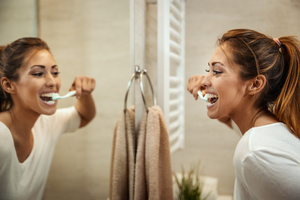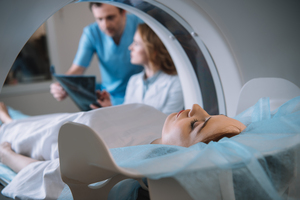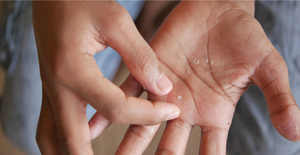Urinalysis
Who should get a urinalysis?
According to the Urological Science and the National Library of Medicine (NLM), your doctor may request a urinalysis for your child because of the following:
- Unexplained fever, particularly in an infant
- Symptoms of a UTI such as lethargy, prolonged jaundice, cloudy or foul-smelling urine, new onset urinary incontinence, abdominal or suprapubic pain, and failure to thrive
- Abnormal results from a rapid urine test
- Screening is needed to identify disorders in the early stage
- Monitor or identify the cause of bleeding in the urinary tract, UTI, liver or kidney disease, bladder stones, diabetes, and some blood diseases
You may also get a urinalysis if you suspect that you or your child has a UTI or disorder.
How to get a urinalysis
You can get a urinalysis from a healthcare provider at a walk-in clinic or an urgent care center. Your primary care provider may request a urinalysis to examine your urine and determine if your child has an infection or disorder in the urinary tract or kidneys. Solv can help you get a urinalysis done. Contact Solv to find a testing facility close to you and schedule an appointment immediately.
What to expect during a urinalysis
You are likely to collect the urine sample in your doctor’s office or a laboratory. A healthcare professional may provide you with a sterile container and cleaning wipes and instruct you on the method of collection. You or the provider may collect the sample depending on the collection method.
How to collect a urine sample for urinalysis
The National Library of Medicine (NLM) describes several strategies for collecting urine samples from children. However, the method of urine collection will depend on your child’s continence.
Midstream urine
You can collect a midstream urine sample if your child has attained urinary continence. Bacteria and other substances in the genital area can easily contaminate urine samples, notes the NLM. You should collect a urine sample after cleaning the genital area with water and soap before collecting the sample. You can avoid bacterial contamination by collecting a clean midstream sample. To collect the midstream sample, interrupt the urine flow after a few seconds and collect the middle part of the urine in the sterile container.
According to the NLM, strategies for a child who cannot control voiding include bag urine, clean-catch urine, suprapubic bladder puncture, and catheter urine.
Bag urine
Inspect, clean thoroughly and dry your child’s genitals. Attach a self-adhesive urine bag. The ideal time to collect the urine sample is after you give your child fluids.
Clean-catch urine
After cleaning, hold your child on your lap with their genitals exposed and catch spontaneous urine right after drinking in a sterile container.
Catheter urine
A healthcare professional may perform a one-time catheterization. This may involve placing a urinary catheter, a special tube for collecting urine from the bladder, through your child’s urethra into the bladder to collect urine.
How is a urinalysis performed?
According to the NLM, the laboratory will examine your urine sample to determine the physical appearance, chemical composition, and microscopic components.
Assessment of urine appearance, color, and cloudiness
Normal urine is yellow, clear, and without a foul odor. The laboratory will check to see if the sample has an abnormal color, cloudy, or has an abnormal odor like honey, fruity, sulfuric, burnt sugar, fecal, or pungent. These abnormalities may be suggestive of a specific disorder.
Examination of the urine chemical components
According to the NLM, the chemical examination in a urinalysis includes the following:
- pH
- Proteinuria—proteins in the urine
- Blood cells, glucosuria—glucose
- Metabolic products such as ketones, bilirubin and urobilinogen, nitrites, and leukocyte esterase
- Microscope examination of urine to identify cells, bacteria, crystals, and remnants of cells
What information does the urinalysis provide?
- The appearance of your urine can provide information about your health status. Very dark urine indicates that your child may be dehydrated or the kidneys are not working properly. Cloudy urine may be indicative of a UTI.
- High protein levels may be a sign of a kidney disorder, heart failure, dehydration, or strenuous exercise.
- Your urine may have abnormal levels of sugar and ketones from elevated blood sugar levels. Glycosuria is associated with diabetes, pregnancy, and Cushing Syndrome.
- Inflammation and infection may be present when your urine has abnormal levels of nitrite and leukocyte esterase.
- Metabolic products are concentrated in the urine. Your urinalysis results may show crystals from high concentrations of metabolic products.
- Cylindrical structures known as casts, typically absent in the urine, are indicative of kidney disease.
- Epithelial cells may line the urethra, bladder, and ureter.
What if the results are abnormal?
An abnormal urinalysis result does not mean you have a health disorder, reports the NLM. Food, medications, vitamins, and menstrual blood can affect your test results. You need to tell your doctor about any health conditions, medications, supplements, or medical conditions to help them interpret the results correctly.
Your doctor will discuss abnormal results with you and develop an appropriate plan. You may have to repeat the test, undergo additional testing, or receive medication to prevent and treat a condition if the results indicate you have a disorder. The treatment will depend on the doctor’s diagnosis. According to the NLM, you can expect the doctor to prescribe antibiotics if you test positive for a UTI.
Meaning of some common abnormal urinalysis results
According to the American Family Physicians, the following urinalysis abnormalities may be associated with certain disorders:
- Glucosuria is typically an indication of uncontrolled diabetes.
- Urine-specific gravity provides information about your child’s hydration status.
- Ketones may indicate nutritional insufficiency or an illness.
- Bilirubin and urobilinogen, from the breakdown of red blood cells, are suggestive of hemolysis or hepatobiliary disease.
- A urinary pH greater than 5.5 may be indicative of hyperventilation, kidney disease, vomiting, or a vegetarian diet.
Find Urinalysis near you
- Alabama
- Alaska
- Arizona
- Arkansas
- California
- Colorado
- Connecticut
- Delaware
- Florida
- Georgia
- Hawaii
- Idaho
- Illinois
- Indiana
- Iowa
- Kansas
- Kentucky
- Louisiana
- Maine
- Maryland
- Massachusetts
- Michigan
- Minnesota
- Mississippi
- Missouri
- Montana
- Nebraska
- Nevada
- New Hampshire
- New Jersey
- New Mexico
- New York
- North Carolina
- North Dakota
- Ohio
- Oklahoma
- Oregon
- Pennsylvania
- Rhode Island
- South Carolina
- South Dakota
- Tennessee
- Texas
- Utah
- Vermont
- Virginia
- Washington
- Washington DC
- West Virginia
- Wisconsin
- Wyoming
Urinalysis FAQs
How long does it take to get the results of the urinalysis?
You can expect to get the results of the urinalysis in a few days. According to LabCorp, it takes one day from the time the sample is picked up from the testing to when your provider receives the results.
Does reddish-colored urine mean there is blood in the urine?
A reddish-colored urine is not always an indication of blood in the urine. According to the NLM, your child’s urine may be red because of the presence of breakdown products of muscle and hemoglobin. Foods or medications can also make your child’s urine red.
What types of food can change the color of urine?
Several food items can change your urine color because of the substances in them, notes the NLM. Red beets, blackberries, rhubarb, and food coloring can change your urine to a dark color.
Can medications affect urinalysis?
Some medications can affect urinalysis by making your urine appear darker, notes the NLM. Chloroquine, phenothiazine, ibuprofen, deferoxamine, metronidazole, phenytoin, rifampin, imipenem/cilastatin, phenolphthalein, and nitrofurantoin can change the color of your urine. You need to tell your doctor about your medications and let them know if you are taking medications that affect urinalysis.
When should I collect a urine sample for a urinalysis?
The first void or morning urine is the best sample for urinalysis. This urine sample from overnight provides information about your kidney’s ability to concentrate urine. The morning urine is concentrated and can be used to detect small amounts of substances that may not be identified in a dilute sample.
Can vitamins affect urinalysis?
Yes, your urinalysis may be affected if you take high quantities of vitamin C. Excessive vitamin C may result in a false-negative nitrite test or lead to an underestimation of glucosuria.
How much urine do I need to collect for the test?
You need to collect about 10 mL of urine for the urinalysis, the NLM reports. If you collect an insufficient urine volume, the extent of testing may be limited. The minimum volume is 2 mL; however, this may not be sufficient for a repeat test.
Does bacteria in my child’s urine mean they have a UTI?
According to Science Direct significant bacteria can be found without leukocyturia (white blood cells in the urine) in healthy children. This condition is known as asymptomatic bacteria, and antibiotics are not needed reports Science Direct.
What is the difference between urinalysis and urine culture?
A urinalysis is an analysis of urine to determine the chemical components and the presence of substances that are typically not present in urine. A urine culture is performed to see if there are germs in the urine.
How can I find a place to get a urinalysis near me?
The best way to find a testing center for urinalysis is to use Solv. You can identify the most suitable, top-rated laboratory in your area and schedule an immediate appointment right from their website.
Solv has strict sourcing guidelines and relies on peer-reviewed studies, academic research institutions, and medical associations. We avoid using tertiary references.
Everyday Healthcare, Simplified
Expert advice to help you live your best life

 LinkedIn
LinkedIn






